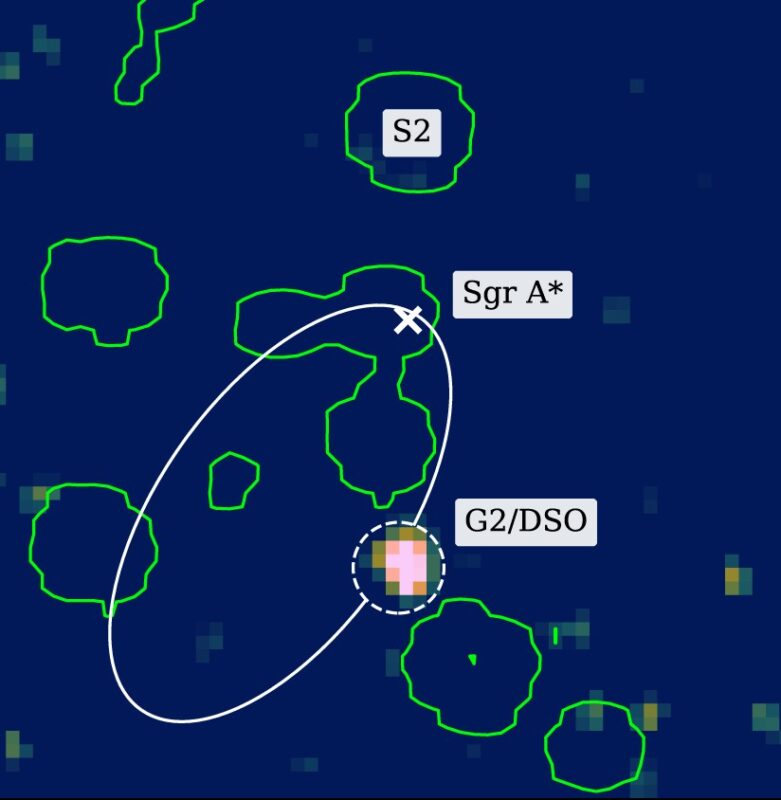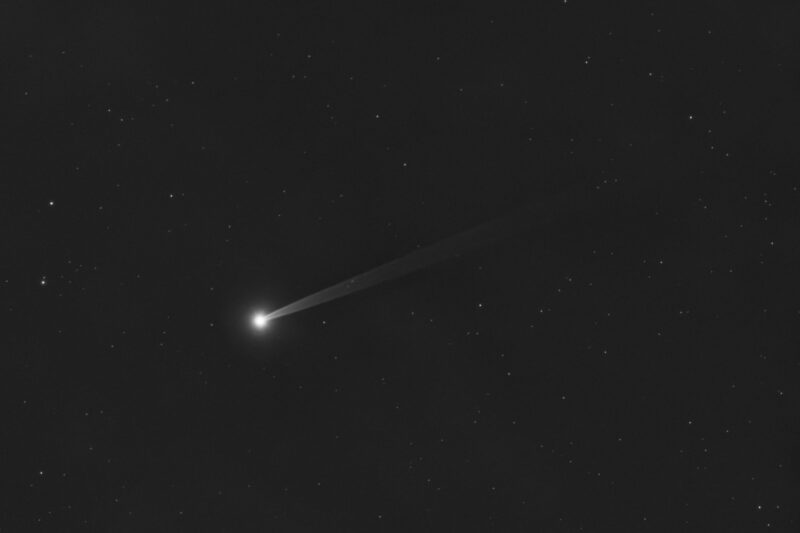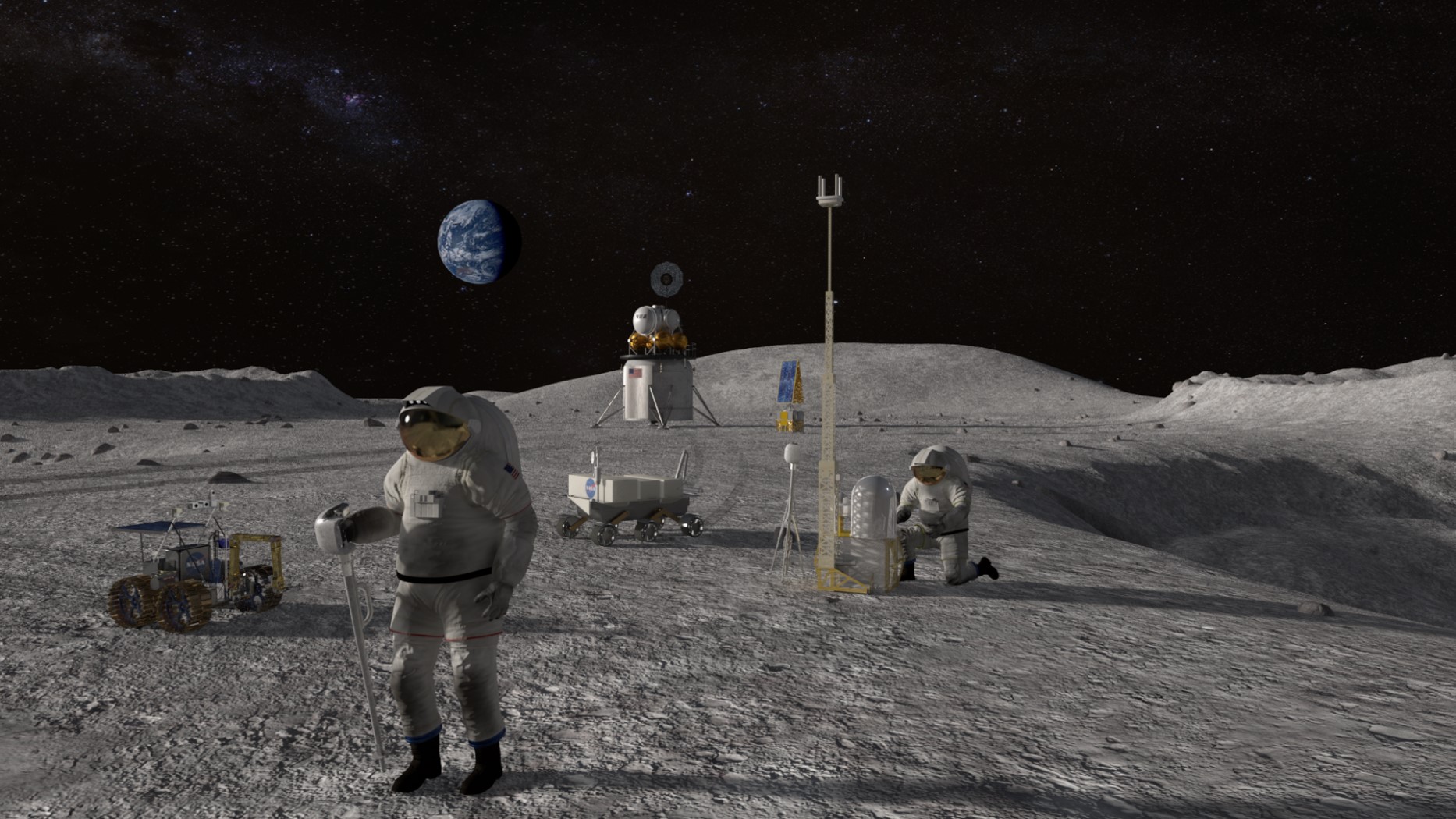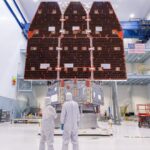Now Reading: Rare massive white dwarf was born when 2 stars collided
-
01
Rare massive white dwarf was born when 2 stars collided
Rare massive white dwarf was born when 2 stars collided
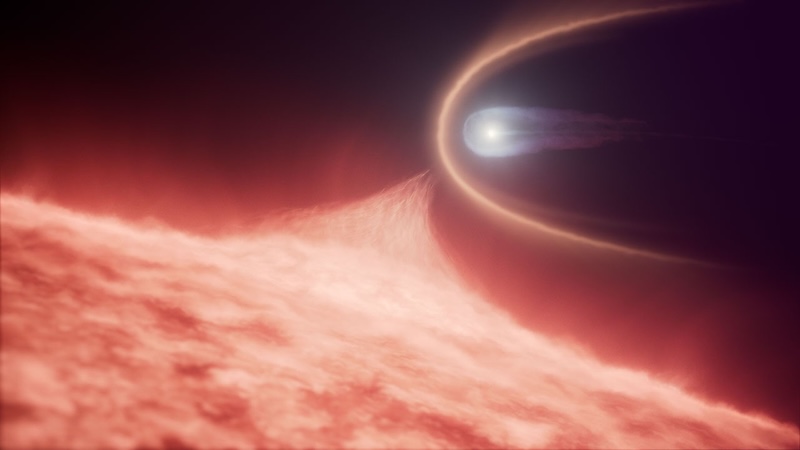
The Hubble Space Telescope has identified a rare massive white dwarf star 128 light-years away that astronomers say likely resulted from a stellar merger like this. Video via NASA’s Goddard Space Flight Center/ YouTube.
- White dwarf stars are the remaining cores of dead stars. After a dying star inflates into a red giant, it blows its gases into space, leaving behind the remaining core, or white dwarf.
- A white dwarf 128 light-years away formed from the collision and merger of two stars, NASA’s Hubble Space Telescope has found. Most white dwarfs form from a single dying star.
- The white dwarf is also more massive than the sun, which is rare. But it could mean that such stellar mergers are more common than previously thought.
A rare, massive white dwarf
A white dwarf star is the dense core that remains after a star has exhausted all of its fuel and blows its gases out into space. But now, astronomers have found a white dwarf that’s a little different. The researchers, led by the University of Warwick in the U.K., said on August 6, 2025, that this white dwarf, 128 light-years away, formed from two stars merging. They were possibly a white dwarf and a subgiant star. The Hubble Space Telescope discovered carbon in the white dwarf’s atmosphere, which provided clues to its origin. The white dwarf is also 1.2 times more massive than our sun, which is rare.
Hubble found the carbon when it observed the white dwarf in ultraviolet light. White dwarfs are common, but typically they’re about half the mass of the sun and the size of Earth. The findings could mean that massive white dwarfs resulting from stellar collisions are more common than previously thought.
The research team published the peer-reviewed details of their discovery in Nature Astronomy on August 6, 2025.
NEWS: A red giant star was found merging with a white dwarf star! The forensic evidence—uncovered in ultraviolet spectral “fingerprints” of the white dwarf by Hubble—shows that the dwarf has been stripped down, exposing a subsurface carbon layer: bit.ly/41FBytj ? ?
— Space Telescope Science Institute (@stsci.edu) 2025-08-13T14:03:06.278Z
Carbon in white dwarf’s atmosphere hints at stellar collision
When Hubble observed the white dwarf – known as WD 0525+526 – it found small amounts of carbon in its atmosphere. This suggested that the white dwarf likely formed from the collision of two stars. And this could have been from the merger of a white dwarf and subgiant star.
Usually, carbon is concealed by hydrogen and helium around the core of the white dwarf.
But when two stars collide, that hydrogen and helium barrier can be stripped away. As a result, the carbon from deeper down can now reach the white dwarf’s atmosphere and be detected. As lead author Snehalata Sahu, Research Fellow at the University of Warwick, explained:
In optical light (the kind of light we see with our eyes), WD 0525+526 looks like a heavy but otherwise ordinary white dwarf. However, through ultraviolet observations obtained with Hubble, we were able to detect faint carbon signatures that were not visible to optical telescopes.
Finding small amounts of carbon in the atmosphere is a telltale sign that this massive white dwarf is likely to be the remnant of a merger between two stars colliding. It also tells us there may be many more merger remnants like this masquerading as common pure-hydrogen atmosphere white dwarfs. Only ultraviolet observations would be able to reveal them to us.
The researchers needed Hubble’s Cosmic Origins Spectrograph to be able to detect the carbon. Sahu said:
Hubble’s Cosmic Origins Spectrograph is the only instrument that can obtain the superb quality ultraviolet spectroscopy that was required to detect the carbon in the atmosphere of this white dwarf.
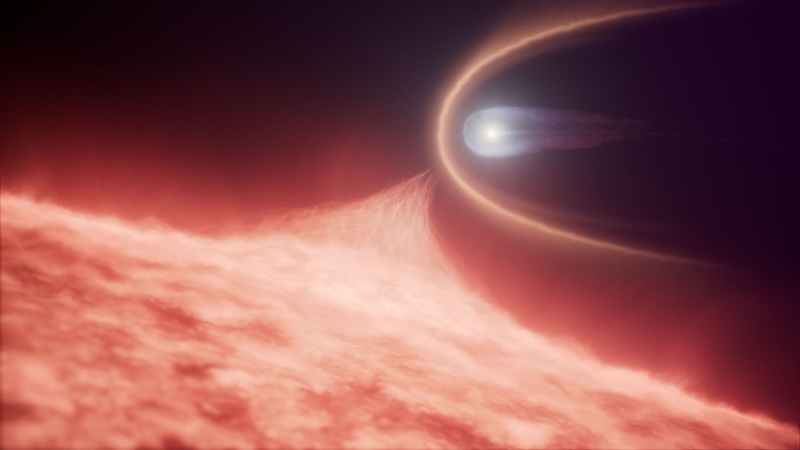
Much less carbon than usual
While there is carbon that was exposed during the merger, there is much less of it than typically seen in other stellar mergers. Co-author Antoine Bédard at Warwick said:
We measured the hydrogen and helium layers to be 10 billion times thinner than in typical white dwarfs. We think these layers were stripped away in the merger, and this is what now allows carbon to appear on the surface.
But this remnant is also unusual: it has about 100,000 times less carbon on its surface compared to other merger remnants. The low carbon level, together with the star’s high temperature (nearly four times hotter than the sun), tells us WD 0525+526 is much earlier in its post-merger evolution than those previously found. This discovery helps us build a better understanding of the fate of binary star systems, which is critical for related phenomena like supernova explosions.

How does the carbon reach the surface of the white dwarf?
The researchers say it has to do with how old the carbon remnants are. Other star mergers that astronomers have previously found were already later in the merging process. This meant that temperatures had already cooled down significantly. They cooled enough for convection – the transfer of heat through a heated fluid – to bring carbon to the surface. That shouldn’t happen in star mergers that are younger and still too hot. But somehow, it does happen in WD 0525+526. This merger remnant white dwarf is still hot and the cooling process is “delayed,” as the paper describes it. So what is the explanation?
The researchers found a similar but subtler convection process occurring, called semi-convection. It allows small amounts of carbon to reach the surface in the white dwarf. This is the first time that astronomers have identified this process in a white dwarf.
Also, it could mean that this white dwarf is leftover from the merger of a white dwarf and subgiant star. As the paper notes:
This subpopulation of delayed white dwarfs is interpreted as being the descendants of certain types of stellar mergers, such as the merger of a white dwarf with a subgiant star.
Evidence of merger in massive white dwarf is unusual
It is rare to find evidence of star mergers in single white dwarfs. As co-author Boris Gänsicke at Warwick noted:
Finding clear evidence of mergers in individual white dwarfs is rare. But ultraviolet spectroscopy gives us the ability to detect these signs early, when the carbon is still invisible at optical wavelengths. Because the Earth’s atmosphere blocks ultraviolet light, these observations must be carried out from space, and currently only Hubble can do this job.
The researchers want to find out how common carbon-bearing white dwarfs actually are. Bédard said:
We would like to extend our research on this topic by exploring how common carbon white dwarfs are among similar white dwarfs, and how many stellar mergers are hiding among the normal white dwarf family. That will be an important contribution to our understanding of white dwarf binaries, and the pathways to supernova explosions.

Things are not always as they 1st appear
The findings are also a reminder that things are not always as they might 1st appear. This is also true in space, of course. Gänsicke said:
It’s a discovery that underlines how things may be different from what they appear to us at first glance. Until now, this appeared as a normal white dwarf, but Hubble’s ultraviolet vision revealed that it had a very different history from what we would have guessed.
Bottom line: A rare massive white dwarf star 128 light-years away formed from the collision and merger of two stars, NASA’s Hubble Space Telescope has found.
Source: A hot white dwarf merger remnant revealed by an ultraviolet detection of carbon
Read more: Evidence for white dwarfs consuming Earth-like worlds
Read more: Earth’s gold came from colliding dead stars
The post Rare massive white dwarf was born when 2 stars collided first appeared on EarthSky.
Stay Informed With the Latest & Most Important News
Previous Post
Next Post
-
 012024 in Review: Highlights from NASA in Silicon Valley
012024 in Review: Highlights from NASA in Silicon Valley -
 02Panasonic Leica Summilux DG 15mm f/1.7 ASPH review
02Panasonic Leica Summilux DG 15mm f/1.7 ASPH review -
 03How New NASA, India Earth Satellite NISAR Will See Earth
03How New NASA, India Earth Satellite NISAR Will See Earth -
 04And Thus Begins A New Year For Life On Earth
04And Thus Begins A New Year For Life On Earth -
 05Astronomy Activation Ambassadors: A New Era
05Astronomy Activation Ambassadors: A New Era -
06SpaceX launch surge helps set new global launch record in 2024
-
 07From Polymerization-Enabled Folding and Assembly to Chemical Evolution: Key Processes for Emergence of Functional Polymers in the Origin of Life
07From Polymerization-Enabled Folding and Assembly to Chemical Evolution: Key Processes for Emergence of Functional Polymers in the Origin of Life













